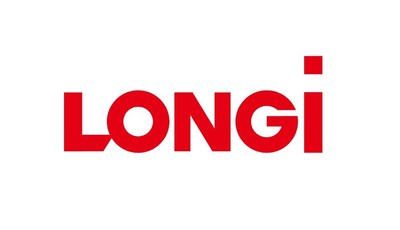BEIJING, April 28, 2025 /PRNewswire/ — The China Electricity Council, TÜV Rheinland, China General Certification Center(CGC), AIKO, and LONGi jointly released the Back Contact (BC) Solar Technology Development White Paper (hereinafter referred to as the “White Paper”) in Beijing. As the world’s first authoritative report on BC technology for the photovoltaic industry, the White Paper systematically elaborates on BC technology’s industrialization path, core advantages, and sustainable development potential, marking the official entry of BC technology—widely recognized as the “ultimate form of single-junction silicon solar cells”—into the large-scale application phase.
The event was hosted by Prof. Hui Shen, Director of the Yangtze Delta Solar PV Innovation Center, and garnered endorsements and commendations from leading industry experts, scholars and customers.
Professor Martin Green from the University of New South Wales (UNSW), Australia—renowned as the “Father of Photovoltaics”, extended his congratulations via video on the release of the White Paper. He predicted that Interdigitated Back Contact (IBC) technology will gradually supplant TOPCon technology within the next five years, while lauding Chinese enterprises’ industrial advancements in BC applications and the technology’s vast future potential. Mr. Jinhua Wu, Executive President of the Solar Power Branch of the China Electricity Council, emphasized in his address that BC technology will propel the photovoltaic industry toward higher efficiency and lower costs. Mr. Xiaochao Zhang , former Deputy Director of the New Energy Division at China Huaneng Group (one of China’s five major power generation conglomerates) stated that BC technology innovation demands collaborative efforts across the entire industrial chain. “As an end-user, we are actively advancing the commercialization of BC innovations. We are confident that BC products, with their high efficiency and proven reliability, will deliver enhanced value to the end-user market,” he emphasized.
Expert Insights: Validating BC’s Global Relevance
Dr. Qi Gao, Technical Director of Solar Services at TÜV Rheinland, interpreted BC technology’s reliability standards and testing systems from an international certification perspective. Mr. Gang Zhou, General Manager of the Solar Energy Division at CGC, presented empirical data demonstrating the outstanding performance of BC modules in demonstration projects. Dr. Yongqian Wang, Chief Scientist of AIKO, discussed the evolution and future vision of photovoltaic technology, particularly BC technology, from the perspective of energy transformation. Dr. Xixiang Xu, Chief Scientist and Vice President of LONGi Central R&D Institute, provided an in-depth analysis of BC technology’s process innovations in the context of photovoltaic technology advancement.
Record-Breaking Efficiency & Technological Superiority
This year, BC cells achieved a new world-record efficiency of 27.81% (certified by ISFH), just 1.3% shy of the theoretical maximum. BC cells integrate both positive and negative electrodes on the backside through full back-contact electrode technology, eliminating front-side busbars shading entirely and maximizing light absorption area. This breakthrough significantly improves conversion efficiency while achieving both optical and electrical performance enhancements, solidifying BC’s status as the “ultimate form of single-junction silicon solar cells.”
During the panel discussion session, Mr. Zhenguo Li, Founder and President of LONGi, and Prof. Wenzhong Shen, Director of the Solar Energy Research Institute at Shanghai Jiao Tong University, along with other industry experts, shared insights on the significance of the White Paper, BC technology’s core breakthroughs, and future challenges. The consensus was clear: BC technology has become the pinnacle of single-junction silicon solar cell development, with its maturity poised to drive future innovation and industry growth.
White Paper Highlights: A Blueprint for Global Adoption
Structured into seven chapters, the White Paper provides an in-depth analysis of : BC technology principles and industrialization pathways; Standardization frameworks and third-party validation; Core performance advantages (efficiency, reliability, bifaciality) ; Application value across utility, commercial, and residential scenarios; Ecosystem development and future trends, etc.
As the “crown jewel” of photovoltaic technologies, BC technology is poised to propel the global solar industry into a new era characterized by higher efficiency and lower levelized cost of electricity (LCOE), injecting powerful momentum into the global energy transition.
SOURCE LONGi







